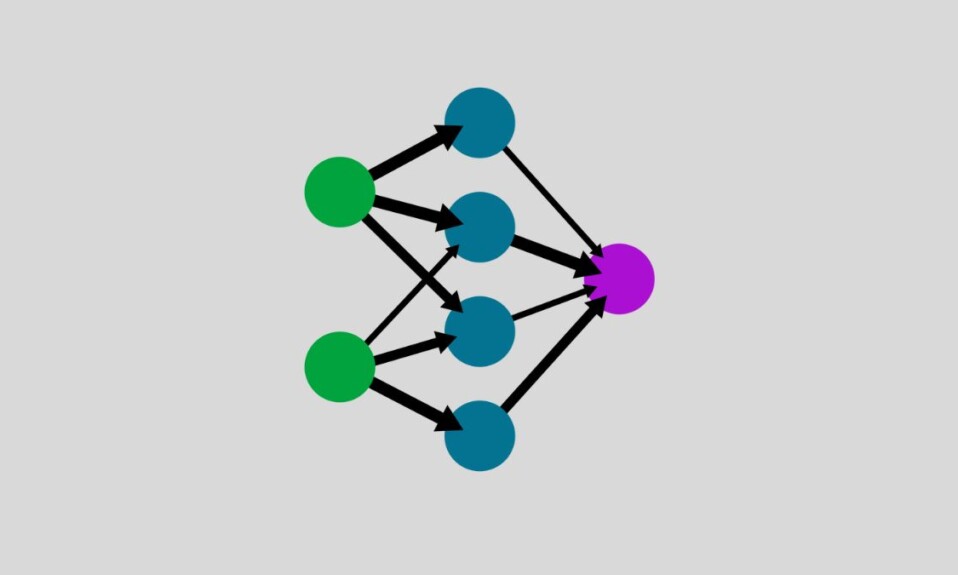
Artificial neural networks, simply known as neural networks, are computing systems formed by artificial neurons. These networks are inspired by the biological neural network of the animal brain and have become one of the most influential topics today. They are a fundamental part of deep learning algorithms, which are associated with artificial intelligence.
Understanding the importance of artificial neural networks is crucial as they are closely related to artificial intelligence, the most discussed topic of today. This article is presented to help you comprehend all the essential aspects you should know regarding artificial neural networks. Let’s get started.
What is an Artificial Neural Network?
In the beginning, we should clarify the definition of artificial neural networks. An artificial neural network is a component of a computing system that functions similarly to an animal’s brain. It can solve problems that may be impossible to address by human or statistical standards.
Similarities Between Artificial and Biological Neural Network
We have mentioned earlier that the human brain inspires the artificial neural network, which replicates the function of the human brain. The biological brain consists of approximately 100 billion neurons, which are the basic processing units of the brain.
In the case of artificial intelligence, artificial neural networks also perform the same function as the artificial intelligence unit. So, artificial neural networks are the neurons of artificial intelligence. The learning process is also the same for both neural networks.
Structure of Artificial Neural Network
The basic structural component of an artificial neural network is artificial neurons, which are arranged into layers. The three functional layers are:
- One input layer
- One or multiple intermediate layer(s)
- One output layer
The input layer collects data from outside sources. This layer contains multiple neurons, and each neuron has different weights. When the neurons of the input layer receive data, they pass that data to the hidden layers for processing.
Hidden layers are the most important layers of the network system that remain in between the input and output layers. Hidden layers process and compute the data.
Neurons of these layers apply different transformations to the input data. Synapses are the connections of the neurons of different layers. All the hidden layers strongly connect through the synapse.
The output layer is the last layer of the neural network system. It receives data from the last output layer. With this layer, we can get the desired number of values in the desired range.
Most neural networks contain these three layers. The neurons of each layer are interconnected with each other with varying strengths. It also connects the neurons of other layers.
How Artificial Neural Network Works?
The function of an artificial neural network is the combined function of all its neurons. The total process is quite complicated, but we will make it easy for you to understand. The neurons of the input layer collect information from outside sources such as data files, images, hardware sensors, microphones, etc.
The input layer also quickly passes the data to the intermediate hidden layers. The input layer receives the data in the form of a pattern or image, but it transfers to the hidden layer in the form of vectors.
These vectors are calculated in the intermediate hidden layers, and the result of the calculation is passed to the output layer. Output layers display the output as a result.
Training of ANN
Training is a crucial part that determines the function of artificial neural networks. The key to performing tasks with ANN (Artificial Neural Networks) is to adjust the weights of the connections of neurons. Training is compulsory for Artificial Neural Networks to find the right weights.
For example, if you want to train an image classifier, you have to provide it with multiple photos labeled with its corresponding class (person, vehicle, animal, tree, etc.). During training, the neural network adjusts itself to glean specific patterns from the data.
Each layer of the hidden layers detects a specific class of data from the input. It processes the data and passes it to the next layer. Thus, every layer analyzes some of the input and passes the result to the next one.
The deeper layers can process more complex data than the superficial layers. Thus, the artificial network developers train the neural network.
Applications of Artificial Neural Network
Following are some of the applications of artificial neural networks:
- Text Classification and Categorization: Text classification is necessary for web searching, information filtering, language identification, readability assessment, and sentiment analysis. Most developers prefer to use a neural network for these purposes.
- Named Entity Recognition: The aim of named entity recognition is to classify named entities like persons, locations, organizations, time, date, and so on. If you give some names like Sachin Tendulkar, India, Microsoft, etc., the artificial neural networks will classify them into predefined categories.
- Speech Recognition: Speech recognition has a massive use in home automation, mobile telephony, virtual assistance, hands-free computing, and video games.
- Character Recognition: Character recognition systems also have numerous uses like receipt character recognition, legal billing document character recognition, check character recognition, etc. Artificial neural networks are used to achieve character recognition accuracy.
- Spell Checking: Neural networks are the finest tools for a text editor. Most text editors have an artificial neural network to check spelling. Some spell-checking tools also use neural networks.
Conclusion
We have included all the things that you should learn about artificial neural networks. Although the artificial neural network is one of the fastest-growing technologies, it still has some limits. You need a lot of data to train an artificial neural network, whereas the human brain does not need so much data.
However, developers are working on improving its accuracy. We can surely expect more advanced artificial neural networks in the future.









